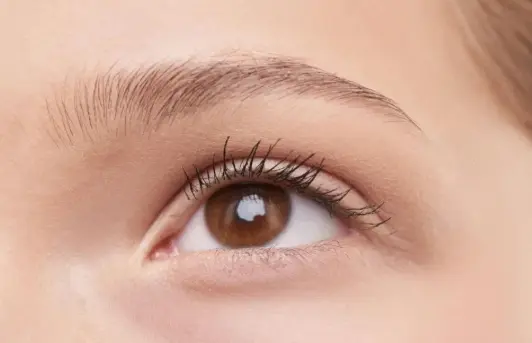How a Porter Ranch Optometrist Can Help Protect Your Eye Health

Eyes are at the core of almost all aspects of your day-to-day life and that is why many people overlook them until things go wrong. Having a good vision is not only required to read and work but also drive, have hobbies, and be independent. Taking care of the eyes is thus not an expensive thing but a necessity.
Porter Ranch optometrist may have a major role in this process. In addition to a prescription to wear glasses or contacts, they are also trained to examine the general health of your eyes, identify early signs of disease and provide preventative care. Through frequent treatment, you will be able to maintain your sight and prevent severe complications in the future.
The Role of an Optometrist in Eye Health
The work of an experienced Porter Ranch optometrist is much more than a mere correction of sight. They check the wellbeing of the whole eye, test diseases and check the changes over time. They also offer the recommendation on how to sustain the healthy vision by maintaining healthy lifestyle and guarded habits. The optometrist is the first individual who can detect underlying conditions in many people before these conditions manifest.
Comprehensive Eye Exams for Early Detection
One of the best services that an optometrist offers is comprehensive eye exams. These tests involve far much more than reading letters on a chart. The optometrist is able to test the retina, optic nerve and the internal eye pressure with the help of enhanced equipment. Minor changes can show the initial phases of such conditions as glaucoma, diabetic eye disease, and macular degeneration.
Early diagnosis of problems provides the patient with a far greater opportunity of preventing blindness. Since most eye diseases develop without symptoms, regular checkups are critical even to individuals who believe that they have normal vision.
Pediatric Vision and Myopia Management
Children benefit greatly from regular optometry visits. Vision problems in childhood can interfere with learning and development. An optometrist can test how a child’s eyes work together, whether there are refractive errors, and if conditions like lazy eye are present.
One growing concern is myopia, or nearsightedness, which is becoming more common in children. Optometrists use methods such as specialty contact lenses, orthokeratology, or medicated drops to slow its progression. Managing myopia early not only improves current vision but also reduces the risk of serious eye problems in adulthood.
Specialty Lenses for Complex Needs
Not all eyes can be corrected with standard lenses. People with irregular corneas or conditions like keratoconus often need customized solutions. Optometrists fit specialty contact lenses, including scleral lenses, that provide sharper vision and greater comfort for these patients.
By tailoring lenses to each person’s eyes, an optometrist ensures that even those with complex vision needs can see clearly and comfortably.
Dry Eye Care and Comfort
Dry, irritated eyes are a common problem, especially in climates with dust or low humidity. Optometrists are trained to identify whether a patient has dry eye syndrome and to recommend solutions. Treatment may include medicated drops, artificial tears, lifestyle adjustments, or advanced therapies.
Addressing dry eye not only relieves discomfort but also protects the cornea from damage and helps maintain overall eye health.
Guidance with Refractive Surgery
For people considering procedures like LASIK, the optometrist plays a central role. They evaluate whether a patient is a good candidate and provide important pre-surgery tests. After surgery, the optometrist monitors healing, manages dry eye or glare issues, and ensures that the results remain stable.
Having a local optometrist to guide you through the process ensures continuity of care and faster intervention if any complications arise.
Ongoing Disease Management
Some eye conditions require long-term monitoring. Glaucoma, diabetic retinopathy, and macular degeneration are examples of diseases that need regular checkups and treatment adjustments. Optometrists provide this ongoing care, using advanced imaging to track changes and collaborating with ophthalmologists when necessary.
Patients benefit from having a consistent provider who knows their eye history and can adapt treatment as the condition evolves.
Convenience and Continuity of Care
Seeing an optometrist close to home provides practical benefits. Follow-up visits and urgent appointments are easier to keep, and your optometrist can monitor changes in your eyes over many years. This continuity allows them to notice small shifts that might otherwise go undetected.
Local providers also understand environmental factors specific to Porter Ranch, such as air quality, allergens, and sunlight exposure, and can recommend protective steps accordingly.
Education and Preventive Advice
Optometrists also serve as educators. They explain the importance of UV protection, give tips for reducing digital eye strain, and recommend nutritional and lifestyle habits that benefit eye health. From teaching the 20-20-20 rule for screen breaks to advising on safety eyewear for sports, they provide practical guidance that patients can use every day.
When to Schedule an Exam
Most adults should schedule an eye exam every one to two years. Children need exams before starting school and at regular intervals afterward. People with diabetes, high blood pressure, or a family history of eye disease should see an optometrist more often.
Any sudden vision change, flashes of light, new floaters, eye pain, or redness should prompt an immediate visit. Regular exams and timely visits protect your vision and prevent small problems from becoming serious.
Clearing Up Misconceptions
Several misconceptions keep people from getting proper care. Many believe they only need an eye exam when vision blurs, but this overlooks silent diseases. Others think contact lens wear does not require monitoring, which can lead to complications. Some assume only older adults need eye exams, but eye health is important at all ages. Understanding these truths helps people view optometry as an essential part of overall healthcare.
The Value for the Porter Ranch Community
For residents of Porter Ranch, a nearby optometrist provides both convenience and comprehensive care. Local patients can easily attend regular exams, seek urgent help when problems occur, and receive guidance specific to their environment. Over time, this support protects vision, improves comfort, and reduces the risk of preventable eye disease.
Conclusion
Protecting your eyes requires more than buying glasses when vision becomes blurry. It calls for regular care from an optometrist who can detect disease, recommend preventive steps, and guide treatment. From children needing myopia control to adults managing chronic conditions, ongoing eye care makes a significant difference.
A Porter Ranch optometrist offers the expertize and continuity necessary to safeguard your vision throughout life. Making routine visits ensures your eyes remain healthy, comfortable, and ready to support you in every stage of life.
Also Read-






